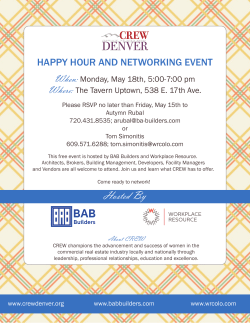
Preparing for an Equipment Audit
Southport Yacht Club Inc. Preparing for an Equipment Audit Audit Progression All equipment audits follow the same progression: • • • The Owner (and a crew member is also recommended) needs to work through the Blue Book (not just the form) and ensure they have all the required equipment, that it is in good and working condition and if necessary, has been serviced and / or is in date (in particular - Flares, Medical Items, Fire Extinguishers, Personal Floatation Devices [PFDs], Life Rafts. The correct Equipment Audit form needs to be completed and available on the boat for the audit. Before the inspection, the owner (and crew member, recommended) should layout all of the equipment from its normal storage position for ease of inspection. Owner's Responsibility • • • • The safety of the boat and her crew is the sole and, inescapable responsibility of the owner, or owner's representative, who shall do their best to ensure that the boat is fully found, thoroughly seaworthy and manned by experienced crew who have undergone appropriate training and, are physically fit to face bad weather. Neither the use of, nor application of the Special Regulations, nor an audit, in any way diminishes the complete and unlimited responsibility of the owner or owner's representative. It is the owner's responsibility to ensure that all crew know the location of equipment on the boat, and how to use or deploy the equipment, for example how to use flares, wear and use PFDs, set storm sails, and know how to conduct man overboard recoveries. Crew training is part of the process of achieving safe sailing All equipment for all crew necessary to comply with the Special Regulations category of event, as notified in the Sailing Instructions or Notice of Race, shall be maintained on the boat for the event at all times. Equipment Auditors • • Equipment Auditors are volunteers who freely give their time to assist owners and the Club maintain an excellent safety record. All auditors are accredited by Yachting Australia and are appointed by a Club's Board. Some Do's • • • • • • Plan and be prepared. At the end of the day we should all take the safety of ourselves and those we are responsible for seriously. Take time to do it properly. Work from the Blue Book, not the form. Only use the form as your final checklist. Make sure your boat has all the equipment laid out before the Auditor arrives. Pay attention to detail, you will be asked what expires first in your medical kit so be ready. Note the expiry date of your flares and extinguishers as well. Keep a log / diary of things that need attention during the currency of your certificate. Remember that it is important that your crew knows where everything is and how to use it. This means you need to consider formal training and must undertake regular drills such as donning PFD's and "man overboard". Some Don'ts • • • Don't be late for your inspection. Auditors are instructed to skip boats where the owner is absent. Don't just tick off items on your audit form without actually locating them on your boat. Don't leave your preparation to the last minute. Servicing of Fire Extinguishers and PFD's takes days, sometimes weeks, and your item may not pass requiring another trip to replace it where Murphy's Law says it will be out of stock. Yachting Australia Equipment Audit Forms Josh Belsham Southport Yacht Club Sailing Administrator 5537 7030 | 0459 903 050 | sailing.admin@southportyachtclub.com.au Tony Horkings Southport Yacht Club Senior Equipment Auditor 0416 146 737 | tonyhorkings@bigpond.com
© Copyright 2025





















